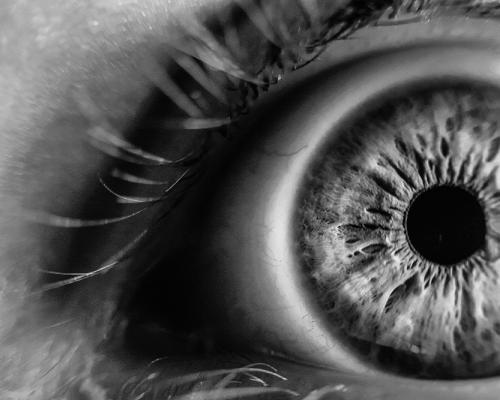Why psychiatrists should be more like plumbers
Dr Farouk Okhai opens his casebook to show how using a variety of techniques, as in the human givens approach, can best help severely distressed people.
RECENTLY, with great relief, I closed the file on Alison, a 37 year old woman who was referred to me early this year. She had already had four spells as a psychiatric inpatient and three and a half years of psychoanalytic psychotherapy elsewhere but, after just five sessions of the rewind technique for quick and effective resolution of trauma, she said she needed no further help. It has now been over 6 months since I last saw her and I have been told by others that she is looking extremely well.
Alison's case is just one of many successes I have had through the use of the rewind technique and other aspects of the human givens approach that I learned in the course of studying for my Human Givens Diploma. I am one of a small but fast-growing number of psychiatrists using the human givens approach in daily NHS work.
The unit where I work as a consultant psychiatrist in psychotherapy has 35 psychiatric inpatients' beds but I mainly see patients referred to me as out-patients by GPs, clinical psychologists, general psychiatrists or other members of our community mental health teams. Half of my patients are viewed as having intractable problems: often, as in the case of Alison, such patients end up receiving a variety of therapeutic help and still keep coming back, their problems no nearer being resolved. Many of them have experienced some severe trauma, which continues to haunt them and leaves them depressed, anxious or changed in their personality.

I am convinced that the rest of the patients I see don't really need the services of a psychiatrist. Professionals such as social workers, community psychiatric nurses or occupational therapists could easily help them in the normal course of their work, but they are often not confident about their psychotherapeutic skills. They would be, however, if they learned the human givens approach, as many are now doing.
This emphasises the major changes that can be achieved in the course of a normal conversation. For instance, reframing an unhelpful way of looking at things, directing people's focus outwards away from their difficulties, (by encouraging them to develop an existing talent, helping others, doing sport or other physical activity), and helping people to identify what is meaningful in their lives. Very often small improvements take place quickly and can be built on.
I quickly wove human givens ideas into my working style. I had been schooled in psychodynamic psychotherapy, cognitive behaviour therapy, cognitive analytical therapy, interpersonal therapy and group therapy, required as part of my psychiatric training in psychotherapy. The human givens approach encompasses all therapy techniques that are effective, without being rigidly confined to any single model. As a result, it is efficient and satisfying. I liken it to being a plumber. Plumbers don't stick to a pre-set model: they learn all the different ways to look at a problem and do whatever is most appropriate to fix the one in front of them as quickly as they can.
I should like to share here a few case histories that demonstrate the effectiveness of this approach in psychiatry. As many of my patients' experiences involve trauma, I have found the human givens version of the rewind technique a particularly helpful tool. I have used it over 50 times in the last two years, and on only four occasions has it not put an end to patients' flashbacks.
A good history
One of the emphases in human givens therapy (and solution-focused therapies in general) is the need to find out not just about a patient's problems but a patient's strengths. I have devised a questionnaire for new patients to complete before their assessment session. It contains not only straightforward informational questions about the concerns that are troubling them, when and how these came about, previous psychiatric history, medication, alcohol and drug use, suicidal thoughts, family and relationships etc but more open-ended questions that include a positive slant.
For instance, "Describe your childhood. Include everything (good and not so good) that you remember having a great effect on you. What are the high and low points of your working life? Describe how you've managed to keep going in spite of everything. Which of your strong points — strengths — have you used to do this? What did you try that did not work and what were you thinking of trying next? When you overcome all your troubles, what will you be doing that is different from what you are doing now?"
The idea is to focus people on what is going well in their lives, rather than just on what is wrong (as people who are depressed or highly anxious tend mainly to volunteer information about what is going badly in their lives). It also arms me with useful information that I can use as needed to build on past achievements and so enhance confidence and self esteem.
Beth's story
Sometimes, of course, the exercise may reveal an initial inability to identify any strong points. Thirty two year old Beth, who had been physically abused as a very young child and sexually abused while in foster care, attributed her ability to keep going entirely to luck. "I can't think of any strengths," she wrote. "The way I feel is that I've been fortunate. I just seem to survive."

When she turned up for her assessment interview, I saw a young woman, full of nervous energy. She was clearly extremely distressed and anxious and went into great detail when answering questions. She was afraid I wouldn't take her problems seriously, as she looked well, had a decent job and had just got married, two weeks previously, to a man she adored. She hadn't told him that she was coming to therapy because she feared he would be hurt and also that he might want her to pore over her past with him, which she was reluctant to do. She was hoping her marriage would be a turning point in her life, and wanted to get on top of the things that she was struggling to cope with.
As she noticed that I was not going to be dismissive of her, she calmed down a little and told me her story. Her mother was a drug addict, who had been hospitalised at one time, and her father was excessively strict. As a young child, she had been terrified of his tirades and his violence against her. At just five, she was taken to hospital with suspicious bruising on her face and was placed on the 'at risk' register. Later, after being badly beaten with a belt and ending up in hospital, she was taken into foster care and then put into a children's home, where she was sexually abused. Eventually Beth went to live with her aunt. Unfortunately, her uncle died a year or so later. Her aunt remarried but Beth did not get on with the new husband and took an overdose of paracetamol when she was 12. She was then sent to live with her grandparents. This was the happiest time in Beth's life. She was devastated, at 15 when her grandmother died.
In spite of difficulties at school, including being bullied, Beth managed to go on to college and, since then, had had a number of generally unsatisfactory clerical jobs. At 21 she became pregnant but her partner was not supportive. After much agonising, she had decided on an abortion.
"These stay"
On her questionnaire, to describe what was troubling her, Beth had said, "I've overwhelming feelings that I find hard to pinpoint one at a time because they are linked together by emotions that have stayed with me — rejection, self blame, failure, insecurity, the feeling that it's me and I deserve whatever happens in my life. These stay. She said that she was often overwhelmed by these emotions, which were triggered by a raised or critical voice, a 'look' or a hand gesture that most people would judge to be innocent. She would flinch and feel as if she were a child about to be beaten. She also tended to flinch when her husband came close to her, a response she attributed to the sexual abuse as a child. Although she did not experience visual flashbacks, she would be "back in my childhood with all the emotions I had then". I decided that Beth's symptoms were consistent with chronic post traumatic stress disorder (PTSD).
Six months passed between the assessment and the first appointment (a dismayingly long time but fairly routine within the NHS). At that appointment, we agreed on three goals: to deal with automatic reactions, such as flinching when her husband came close; to deal with the flashbacks related to the bullying and beatings by her father when she was a child; and to deal with the guilt she felt over the abortion.
In human givens therapy, the therapist always does something in a session to make the patient feel better and more hopeful. (There is no such thing as a session devoted to history taking and nothing else.) So, in the first session, I decided to address the flashbacks of the sexual abuse. When I asked Beth to scale them from 1 to 10, with 10 being the worst they could be, she gave them a 10. I then took her through the rewind technique, asking her to visualise, in turn, as many specific incidents connected with the abuse as she felt she needed to. I also taught her the 7/11 breathing technique (breathe in to the count of 7, out to the count of 11) to slow her breathing and thus help her calm down when she was anxious.
Going down the scale

At her next session a week later, Beth scaled the flashbacks of the abuse at between 6 and 7. It didn't surprise me that they hadn't disappeared entirely; the procedure often needs to be repeated in cases involving multiple incidents of abuse. However, she said she didn't want to use the rewind technique to go through the sexual abuse incidents again. She wanted to deal with the flashbacks related to the treatment she had suffered at the hands of her father. The following week she scaled the flashbacks of sexual abuse at 2 and said those relating to her father had eased off to 7 from the 10 they had started at.
We talked in that third session about Beth's guilt and distress over the abortion. It struck me that, even though the guilt felt amorphous and all enveloping to her, she must have been traumatised by the procedure itself. In my experience of working with patients deeply troubled by a past abortion, the memory of the abortion itself remains vivid. So I tried the rewind technique to deal with that. Beth was distressed and felt nauseous during the session but I made sure she was calm before she left.
Two weeks later, Beth informed me that the distressing memories of the abortion had fallen to 3 from 10 on the 10-point scale. The flashbacks about her father were at 4 and those relating to the sexual abuse still at 2. She didn't want to repeat any of the rewind procedures. Instead, we talked about her difficulties with assertiveness at work. I gave her a sheet explaining simple steps to being assertive and suggested she role play some scenarios with her husband, taking turns at being the bully and being Beth.
I reinforced these ideas with a guided visualisation, a very strong feature of the human givens approach in its own right, not just as part of the rewind technique (see " The power of deep relaxation and guided imagery" ). First I relaxed Beth and then encouraged her to see herself acting assertively in different settings. While she was still deeply relaxed, I gave her the post-hypnotic suggestion that she could induce relaxation whenever she felt anxious just by gently squeezing together her thumb and forefinger.
Beth missed two sessions because of illness and a conflicting appointment but when I next saw her a month later she said she had successfully put the assertiveness techniques into practice, saying a firm no to a colleague at work, who was often unreasonably demanding. The following session a fortnight later turned out to be our last. Beth looked well and agreed that she was more relaxed in general. She had found squeezing her thumb and forefinger when she felt stressed enormously helpful, and had been assertive in some quite difficult situations, without any longer feeling put upon and victimised. She had stopped having flashbacks of any kind and announced happily that she didn't think she needed to see me anymore. She left my consulting room, highly confident that she was going to be able to put her whole heart into her marriage and her future: she was considering training to be a teacher. It was clear that eliminating the intrusive memories was sufficient to enable her to get on, and be optimistic about, her life.
Alison's story
Alison was a very different sort of person to work with. One of the basic tenets of the human givens approach is to establish rapport at the outset. That begins quite naturally with a smile, being attentive, and encouraging initial small talk rather than poring over notes with bent head when a patient enters the room. But Alison rarely smiled. At our first session her expression was a combination of distress and frustration. I knew from her notes and returned questionnaire that she had been depressed for many years and had been admitted to hospital four times, once for as long as eight months. During that admission she was aggressive and violent on the ward and did so much damage she was threatened with criminal charges. She was now taking an antidepressant and an anti-epilepsy drug, commonly used as a mood stabiliser.
Alison had been with her husband for 20 years and had two teenage boys. She clearly lived for her sons and supported them avidly on the football field but had always found it hard to be physically affectionate. Alison was very bitter about her childhood. She had an older cousin whom her parents treated as the golden child in their extended family, and she felt she was constantly compared unfavourably to him. She wrote poignantly in her questionnaire: "My cousin could do no wrong. I was always bad or wrong. I can remember at the age of about four looking out of the window for my real family. I thought I was adopted and my real parents would come to take me away. I felt I never fitted in and could never please anyone."

Her parents didn't know that her cousin had sexually abused her for three years from the age of seven (when he was 14). During her teen years, she was bullied at school and someone she considered a friend raped her. When she was 17, she went to Barcelona as an au pair and was caught in the vicinity of an ETA bomb. Although she suffered few injuries, she continually relived the memory of being surrounded by dead bodies.
After she returned to England, she married. She hadn't worked outside the home since the birth of her first child, and described herself as a non-person.
The troubling flashbacks
Alison was extremely downcast in the way she spoke. She had difficulty expressing herself and had always had trouble socialising, but what plagued her most were the vivid and intense flashbacks of the bomb blast, the rape and the sexual abuse. It was these, and these alone, that she wanted to work on. The images intruded almost every day, often two or three times a day, and she would feel she was reliving these experiences each time. She was wary of intimacy of any kind, as this often triggered flashbacks of the sexual traumas. Three years of psychoanalytic therapy and 20 weeks of cognitive analytic therapy had not lessened her distress or helped her to cope with it.
In our first session after her assessment, I used the rewind technique for the bomb blast. She gave me little feedback, although she left the room in a calm state. The following week she said matter of factly that the flashbacks to the bomb blast had eased off a lot. When I asked what she wanted to work on that day, she replied tersely, "An incident that happened when I was 14". She said no more about it and, of course, the beauty of the rewind technique is that the patient is not forced to discuss openly anything they would prefer to keep private. I took her through the steps, without knowing what experience she was working through. I don't think she said another word, except to thank me as she left.
At our third meeting, she told me, but only when prompted, that the bomb blast flashbacks, which she had scaled as 10 in severity, were now down to 5. The incident at age 14 she scaled at 7 from an initial 10. She chose to work on another undiscussed incident, which had involved her cousin.
The following week, there was a glimmer of animation in her face when I asked how she had been getting on. "The flashbacks aren't bad at all. I would never have believed it" That week we did a rewind on "an incident in the park".
Though she remained aloof, she softened just a little with every session. We ended up with what I would call a comfortable understanding. At the next session, she told me all her flashbacks had resolved and chose not to have any further sessions. I know from her general practitioner that she looks well and is much brighter. Though she still has difficulty socialising, Alison did not want to address that in therapy. It is patients who must set their own goals, and Alison felt she had achieved what she wanted from her therapy.
Reluctant to recover
In my area of work, it is not unusual to see people who have been shunted around the mental health services for years, and whom professionals despair of helping. Sometimes people don't seem to want to get better. They don't respond well to setting concrete goals or to challenging questions such as, "When you are better, what will you be doing differently?" However, I have been surprised that, by using techniques from the wide-ranging human givens approach, one can always do something to move such people along.
One man for years attended groups at three different day centres every week, regularly saw a general psychiatrist colleague of mine, and was admitted to psychiatric hospitals several times in the course of the previous ten years — all without making any headway with his many problems. The psychiatrist finally decided to refer him to me, to see if I could do anything more.
I despaired when I first saw him. But he has been improving, though very slowly. I first saw him every week but this has now tapered down to every 3 months. I have used the human givens approach of acknowledging but otherwise ignoring his complaints, getting him to amplify what is going well and asking him to explain to me how he has achieved what he has, and the strengths and resources he used to do so. I also work at embedding therapeutic suggestions: "Hello. You look as though you feel better. What have you noticed as you get better and become more able to do things? Can you do more or are you already able to do the best that you can?"
Something is happening because he no longer goes to any day centres and has been discharged by the psychiatrist. He is now in a relationship and has taken on a job for two mornings a week. Quite an advance for someone who, for years, had demanded all the medical attention he could get.
View another case history on applying deep relaxation and guided imagery to treat depression here.
This article first appeared in "Human Givens Journal" Volume 10 - No. 3: 2003
 Spread the word – each issue of the Journal is jam-packed with thought-provoking articles, interviews, case histories, news, research findings, book reviews and more. The journal takes no advertising at all, in order to maintain its editorial independence.
Spread the word – each issue of the Journal is jam-packed with thought-provoking articles, interviews, case histories, news, research findings, book reviews and more. The journal takes no advertising at all, in order to maintain its editorial independence.
To survive, however, it needs new readers and subscribers – if you find the articles, case histories and interviews on this website helpful, and would like to support the human givens approach – please take out a subscription or buy a back issue today.
Latest Tweets:
Tweets by humangivensLatest News:
HG practitioner participates in global congress
HG practitioner Felicity Jaffrey, who lives and works in Egypt, received the extraordinary honour of being invited to speak at Egypt’s hugely prestigious Global Congress on Population, Health and Human Development (PHDC24) in Cairo in October.
SCoPEd - latest update
The six SCoPEd partners have published their latest update on the important work currently underway with regards to the SCoPEd framework implementation, governance and impact assessment.
Date posted: 14/02/2024













